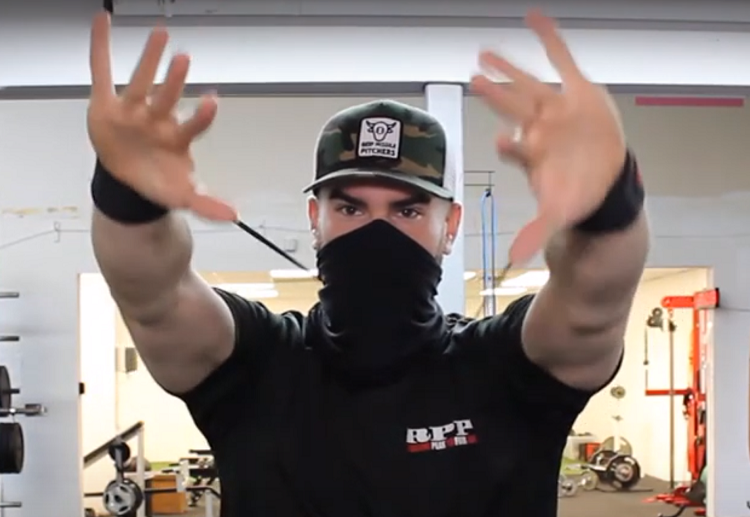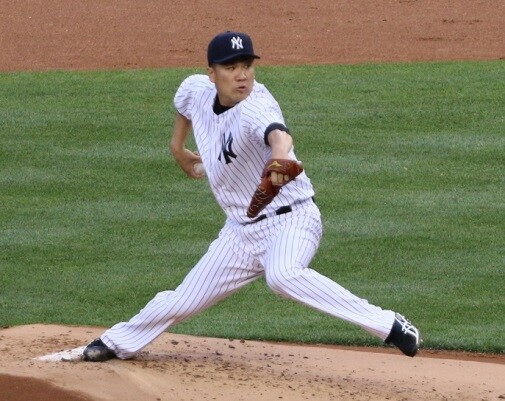
Sometimes when analyzing video, things are not as they seem visually and can send both athletes and coaches looking down the wrong rabbit hole for solutions. Continue reading “Reading Data… The Importance of an Accurate Frame of Reference”

Sometimes when analyzing video, things are not as they seem visually and can send both athletes and coaches looking down the wrong rabbit hole for solutions. Continue reading “Reading Data… The Importance of an Accurate Frame of Reference”

As many of you know, senior pitcher Sean Hard and his high school team St. Joe’s (Montvale, NJ) recently won the New Jersey State Non-Public A Group Tournament. They actually won their league, county, sectional and ultimately the state championship, all in the same year. Sean’s record for the season as a pitcher was 8-0, 50.2 IP, 87 K, 2 R, 0.62 WHIP, 0.36 ERA. He topped out at 95 mph at the final game of the year. There are a lot of things Sean has done right during his development and it’s important to highlight how he got here, as no one has worked harder at this craft than this young man. Continue reading “Sean Hard’s Path to New Jersey State Champion”

Long-toss is a concept that we see many athletes under-utilize, misinterpret, or perform improperly. We use our long-toss program in a variety of ways to help our athletes maintain proper throwing volume and intensity depending on where they are during the season or their throwing program. But generally, it is our belief that long-toss should be a staple in every pitcher’s routine, specifically to increase intensity in the throw and get the arm and tissue used to the stress of throwing (otherwise known as Davis’ Law). Continue reading “Why and How We Incorporate Long Toss in Our Programs”
Improving an unintentional cut on a 4S fastball can be particularly challenging. It’s a habitual release pattern of the ball with a cut and trying to change years and years of a specific movement pattern moving at high speeds requires dedication and work. In this article, we are going to review many of the methods we’ve have used with some success when addressing excessive and inadvertent cut on a fastball.
However, this article does come with a disclaimer: We’re not necessarily suggesting that you must fix a cut on your 4S fastball. If a cut fastball is an effective pitch for you, and you would like to continue to throw your 4S fastball this way, you should continue throwing it that way. This article is meant for those who have a cut and would like to adjust their fastball to move like a regular 4S fastball with additional back spin and perhaps higher velocity. Continue reading “How to Improve Unintentional Cut on a Fastball”

While performing hundreds of video analysis and mocaps yearly, “early trunk rotation” rears its ugly heads more than 90% of any other disconnect we see. An early trunk puts the upper body in a more compromised position to accept ground reaction force and effectively block with the lead leg while negatively affecting timing issues and transfer of force up the chain. It can also contribute to a late arm or an arm that “drags”. All this, of course, can ultimately lead to losses in pitching velocity. The key is finding what is causing this early rotation, training it and putting the arm in its “sweet spot”. Continue reading “Early Trunk Rotation and Losses in Pitching Velocity”

We have talked in the past about hip-shoulder separation and its importance in the pitching motion. In this article, we will dive deeper into the idea of “closing the gap” after max separation has occurred. More specifically:
We will also review some potential issues and how we may address them.
Continue reading “Pitching Biomechanics: Hip Shoulder Separation, Closing the Gap”

When I first started training, I like many others believed that if we just keep improving absolute strength our athletes would continue to get bigger, faster, and stronger. Fast forward to many years later, and I can tell you with a great degree of confidence (and experience) that most metrics crucial to sport such as speed, explosive ability, and change of direction can only be improved for about the first year simply by increasing absolute strength, as in getting stronger, by utilizing big compound lifts under high load. However, Continue reading “How to Create the Best Prescription for Power”

There is certainly no shortage of pitching bands and baseball band exercises for pitchers. There are actually so many that it can make your head spin. We use several baseball band exercises for pitchers as a part of our pre-throwing routine and over the years we have refined them down to what we believe to be the min / max of what you should be doing. Continue reading “What are the Best Baseball Band Exercises for Pitchers”

It’s no mystery that one of the keys to successful pitching is a consistent release point. While I do believe that the term “repeatable delivery” is a bit of a stretch, and that many times inconsistency in your arm slot can be a major cause of difficulty in repeating your delivery, I believe we need to dig a little deeper and look closer down the kinetic chain to lower half pitching issues. Continue reading “5 Lower Half Pitching Issues Preventing a Consistent Release Point”

It’s been a crazy year for everyone, but that didn’t stop us from continuing our efforts to develop great ball players while educating the community at the same time. Here are the top received blogs of 2020. Continue reading “Best of 2020… Strength Training, Pitching and Hitting Articles”